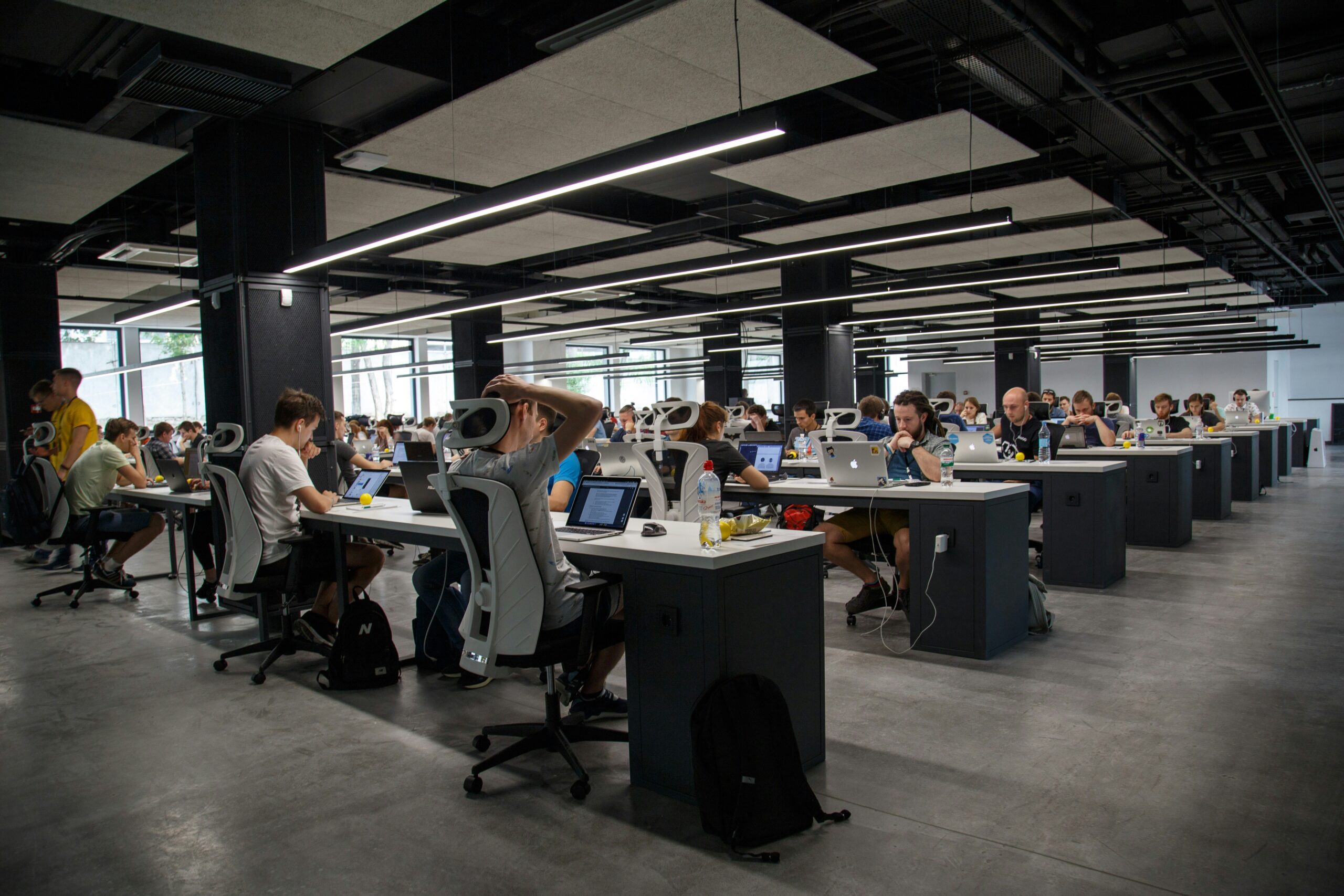With the digitization of businesses, the use of display screens has become essential. The digital era has profoundly transformed our workplaces. Here's an overview of the impact of these technologies on productivity and work-life balance. This article also suggests strategies for optimizing their use. The key lies in the ability to integrate these tools in such a way as to enrich our working environment without suffering the drawbacks.
What impact do screens have on productivity at work?
Screens, by facilitating coordination and knowledge sharing, increase profitability and well-being at work. However, their use must be judicious to avoid negative effects on concentration as well as mental and physical health. Strategic use of screens is therefore essential to maximize their positive potential on productivity. Duan, Deng, & Wibowo, 2023 REF [^1^].
Screens and their influence on employee activity
Digitizing business processes improves efficiency and employee performance, but requires a balance to maintain job satisfaction. It's vital to strike the right balance between beneficial and excessive use of digital technologies. Dewi & Krisnadi, 2023 REF [^1^].
How do you choose the right IT tool to boost productivity?
Selecting tools that match specific task needs and promote effective communication and decision-making is necessary to avoid compromising work-life balance. Selecting the right media also reduces wasted time and impacts overall efficiency.
Limiting screen-related distractions
Clear rules need to be put in place, such as time slots dedicated to email and social networking, to help reduce distractions and encourage more focused work. Implementing these rules contributes to better focus and reduced stress.
How can you maintain the right balance between your professional life and time management?
The use of digital media must be harmonious to preserve mental and physical health. Regular breaks and the demarcation of a dedicated work space are beneficial practices. This helps to clearly separate work time from personal time, which is essential for a healthy balance. On average, a French person spends 20 hours a week in front of a connected device as part of his or her professional activity, compared with 36 hours in his or her free time.
Efficient use of IT tools
Scheduling management tools, effectively integrated into the daily use of digital devices, ensure efficiency, harmony and well-being. The adoption of these technologies enables better task organization and reduced anxiety in the workplace.
The risks of excessive use of screens at work
Excessive use of digital devices can lead to health problems such as eyestrain, musculoskeletal problems, sedentary lifestyles and stress. It's important to take steps to limit these risks, including regular breaks and appropriate ergonomics. Awareness is the first step towards healthier use of technology.
What tips can you use to be more productive and flexible at work?
Adapting your workstation with two computer screens for greater profitability
Adapting the workspace with digital devices improves profitability. The use of two screens, for example, makes it easier to organize information and increase efficiency. This configuration facilitates multitasking, i.e. working on several tasks simultaneously without having to toggle between different windows. The quality of the work produced is also enhanced. This configuration optimizes the digital workspace and facilitates access to necessary information.
Integrating screen flexibility into teleworking
Technology plays a key role in teleworking. They offer the flexibility needed to maintain effective communication and collaboration at a distance. A virtual office environment is recreated, which is essential for maintaining activities away from traditional premises.
Managing e-mail and business communication effectively
Efficient management of e-mail and communication tools is essential to avoid information overload and maintain clear, effective exchanges. Good e-mail organization and prioritization of communication tasks are essential for efficient planning.
How can you avoid procrastination and improve your professional balance?
Optimal work-life balance
Establishing clear boundaries between work and personal life is crucial, especially in a digitized work environment. Delineating these spaces contributes to better mental health and greater satisfaction in both spheres.
Strategies to avoid procrastination linked to excessive screen use
Setting clear goals, planning breaks and using time management techniques help reduce procrastination and optimize technology use. These strategies encourage a more disciplined and focused approach to the use of digital technologies.
Improve your planning by using screens more wisely
Adopting conscious work practices and limiting digital distractions are effective ways of optimizing time and increasing output. Thoughtful use of connected devices maximizes their potential.
In conclusion
Screens have a profound impact on our working lives. They offer opportunities for increasing productivity and work-life balance. However, judicious and balanced use of screens is vital if we are to reap their benefits, such as improved professional efficiency. Implementing these different strategies protects us from the various pitfalls associated with overexposure to these technologies.
Disclaimer
This article draws on studies and research to provide an overview of the impact of screens on working life. The references cited come from verified sources and contribute to the argument developed.
References
REF [^1^]. Duan, S., Deng, H., & Wibowo, S. (2023). Exploring the impact of digital work on work-life balance and job performance: a technology affordance perspective. Link
REF [^2^]. Dewi, C.T.T., & Krisnadi, H. (2023). The Effects of Using Digitalization, Work Life Balance and Work Engagement on Employee Performance Through Job Satisfaction at PT Waskita Karya Infrastruktur. Link
